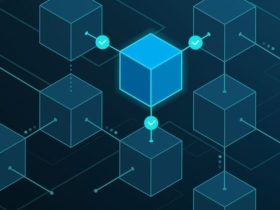In today’s rapidly evolving digital frontier, the cybersecurity landscape stands at the crossroads of innovation, risk, and unprecedented collaboration. On April 9, 2025, a series of headline‑making stories shook the sector—from groundbreaking funding rounds and innovative partnerships, to high‑stakes political debates and emerging threat alerts. In this special edition of our Cybersecurity Roundup, we provide a detailed op‑ed style briefing on the major developments of the day. Our analysis spans from Octane’s impressive funding injection for an AI‑powered blockchain cybersecurity solution, to US lawmakers challenging long‑standing data treaties in the wake of controversial Apple backdoor mandates, and extends to visionary technological alliances involving Accenture Federal Services and Google SecOps. We also explore how Netwrix is paving the way for agentic AI in cybersecurity efficiency and learn from Datastrike executives who are setting the stage for future industry conferences focused on AI, IT governance, and managed services.
This article not only summarizes the latest news but also offers a deep dive into the broader implications for the global cybersecurity community. As cyber threats multiply and evolve, partnerships, innovative funding, and policy decisions are critical to shaping a secure digital future. Let’s explore each story in detail, uncovering the trends, challenges, and opportunities that define today’s cybersecurity landscape.
Introduction: A New Era of Cyber Defense and Innovation
Cybersecurity is no longer confined to perimeter defenses and antivirus software; it has morphed into a strategic domain where artificial intelligence, blockchain technology, and cutting‑edge partnerships are at the forefront. In an era marked by rapid digital transformation, the convergence of emerging threats, breakthrough funding, and dynamic collaborations continues to redefine the industry.
Today, we witness the synergy of innovation and necessity. Venture capital flows like lifeblood into transformative cybersecurity startups, while established companies forge alliances to stay ahead of adversaries. Simultaneously, geopolitical tensions and public debates over data security and privacy mandate greater accountability. As the global stage shifts, cybersecurity professionals must navigate a complex intersection of technology, policy, and market forces.
Throughout this article, we break down the most impactful stories shaping the day’s news. We analyze their technical, financial, and strategic dimensions, and we offer insights into how these developments could drive tomorrow’s security innovations. Whether it is through AI‑powered defenses, reimagined data treaties, or strategic partnerships that promise to revolutionize public sector cybersecurity, the trends we cover today are harbingers of what lies ahead. Let’s delve into these transformative stories one by one.
1. Octane’s $6.75 Million Boost for AI‑Powered Cybersecurity in Blockchain
Revolutionizing Cyber Defenses with AI and Blockchain
In an era defined by increasingly sophisticated cyberattacks, innovation in cybersecurity is essential. One of the standout stories today comes from Octane, which has successfully secured $6.75 million in funding to advance its AI‑powered cybersecurity solution designed specifically for blockchain networks.
Source: PYMNTS
Octane’s groundbreaking technology leverages machine learning to monitor, detect, and thwart malicious activities within blockchain ecosystems. With blockchain’s decentralized architecture, traditional security measures often fall short; however, Octane’s solution brings a novel approach by integrating AI to predict threat patterns and respond in real time.
This investment round is significant on multiple levels. First, it underscores the confidence investors have in a technology that is at the intersection of two high‑growth areas: cybersecurity and blockchain. Second, the infusion of capital will enable Octane to enhance its product’s capabilities, scale globally, and contribute to broader market adoption. In a landscape where blockchain is increasingly used for secure transactions and data integrity, ensuring its resilience to cyberattacks has become paramount.
Technical and Strategic Implications
From a technical standpoint, Octane’s platform offers a host of features that set it apart. Advanced algorithms continuously analyze blockchain transactions, flagging anomalous behavior that may indicate cyber threats or fraudulent activities. Moreover, by incorporating deep learning, the system evolves with each attempted breach, ensuring that its threat detection framework remains robust amid changing attack vectors.
Strategically, Octane’s funding round is an encouraging sign for the industry. It highlights a growing trend where venture capital and institutional investments are increasingly channeled towards solutions that promise to secure the next generation of digital infrastructure. For other cybersecurity startups and technology innovators, Octane’s success serves as a model of the potential for AI to revolutionize how we address modern security challenges.
Opinion: A Paradigm Shift in Cybersecurity
The capital raise by Octane is not merely a financial milestone—it represents a significant paradigm shift in cybersecurity. In an age where blockchain underpins everything from financial transactions to supply chain management, the need for robust, adaptive security solutions has never been greater. The integration of AI into blockchain security paves the way for more proactive defenses rather than reactive measures, offering an exciting glimpse into the future of digital trust and security.
For industry stakeholders, this development serves as both a challenge and an opportunity. On one hand, it sets a new standard for what cybersecurity solutions need to deliver. On the other, it encourages both startups and established players to explore new technologies that can bolster defenses in an increasingly interconnected world. As organizations continue to digitize and harness blockchain technology for various applications, the importance of advanced cybersecurity solutions like Octane’s will only grow.
2. US Lawmakers Question Data Security: The Apple Backdoor Debate and UK Data Treaty
High‑Stakes Policy Debates and Data Sovereignty
In a story that has captured the attention of both policymakers and technology experts, two US lawmakers are urging the White House to terminate the existing UK data treaty. The legislative push comes on the heels of a controversial order calling for backdoors in Apple’s device security infrastructure.
Source: Reuters
The debate centers around the delicate balance between law enforcement access and consumer privacy. Lawmakers have voiced concerns that the treaty, which facilitates data sharing between the US and the UK, may inadvertently jeopardize the security of American citizens by obligating US companies to compromise on data integrity. The specific focus on the Apple backdoor order has reignited discussions about the risks of weakening encryption in favor of surveillance and law enforcement.
The Broader Picture: National Security vs. Privacy
At its core, this controversy pits national security interests against the public’s right to secure, private communications. The proposed changes to the treaty represent a significant shift in policy. Critics argue that any mandate for backdoors in encryption would not only expose consumers to potential breaches but also create vulnerabilities that could be exploited by malicious actors. Proponents, however, maintain that such measures are essential to counter terrorism, cybercrime, and other forms of high‑stakes criminal activity.
The debate is further complicated by technological considerations. Apple and other tech giants have long championed the importance of strong encryption for safeguarding user data—a principle that is foundational to maintaining trust in digital systems. Weakening these defenses, even for government access, could have far‑reaching consequences in terms of both cybersecurity and consumer confidence.
Opinion: The Dilemma of Security and Convenience
The current deliberations by US lawmakers highlight a perennial dilemma in cybersecurity policy: how to ensure security without compromising individual privacy and trust. The call to revisit the UK data treaty is symptomatic of larger concerns about the nature of surveillance in a digital age. If backdoor orders become standard practice, the very technology designed to protect us could be weaponized against us. It is a classic case of security versus freedom, one that requires nuanced debate and balanced policymaking.
From a strategic standpoint, this controversy could have long‑term implications for international data treaties and cross‑border collaboration in cybersecurity. As nations reassess their data-sharing agreements, industries might face increased regulatory pressures to bolster their security protocols or risk losing consumer confidence. For tech companies, the message is clear: innovative, secure products must be built on principles that do not sacrifice privacy for short‑term gains.
3. Accenture Federal Services and Google SecOps: Transforming Government Cybersecurity with MXDR
A New Era for Public Sector Cyber Defense
In an announcement that has significant implications for government cybersecurity, Accenture Federal Services unveiled its new Managed Extended Detection and Response (MXDR) solution for federal agencies. This state‑of‑the‑art system is powered by Google SecOps and is designed to enhance federal cybersecurity defenses by streamlining threat detection and response across government networks.
Source: Accenture Federal Services Newsroom
Accenture’s MXDR initiative promises to revolutionize the way government agencies approach cybersecurity. By integrating Google SecOps’ advanced security operations with the strategic expertise of Accenture, the platform aims to offer real‑time analytics, incident response, and threat hunting capabilities that are critical in today’s fast‑paced threat environment.
The Technology Behind MXDR
MXDR is built on a foundation of cutting‑edge technology. At its core, it leverages cloud‑based analytics, machine learning, and automation to provide 24/7 monitoring of federal networks. The solution is designed to identify anomalous patterns, recognize emerging threat indicators, and deploy countermeasures with minimal delay. As cybersecurity threats grow in sophistication and volume, the ability to respond quickly and effectively becomes a paramount concern for public institutions.
One of the defining features of MXDR is its scalability. With federal networks being vast and complex, traditional security measures often fall short in keeping pace with rapidly evolving threats. MXDR’s ability to absorb and analyze large volumes of data in real time not only improves the accuracy of threat detection but also minimizes false positives—a critical factor in maintaining operational efficiency.
Strategic and Practical Impact on Government Cybersecurity
The introduction of MXDR represents a significant shift in how government cybersecurity is managed. Federal agencies have long grappled with the dual challenges of limited resources and an expanding threat landscape. By adopting a sophisticated, technology‑driven approach, Accenture and Google are providing a model that could be replicated across other regions and sectors.
On a broader level, the MXDR initiative underscores the importance of public‑private partnerships in tackling cybersecurity threats. It is a vivid example of how collaboration between industry leaders and government entities can yield solutions that are not only innovative but also tailored to the complex demands of national security. For government agencies, the enhanced protection offered by MXDR means improved resilience against cyberattacks, which in turn supports broader national objectives of security and stability.
Opinion: Empowering the Public Sector Through Innovation
Accenture’s MXDR, powered by Google SecOps, is emblematic of the transformative potential at the intersection of advanced technology and public sector reform. In a world where cyber threats transcend borders and evolve with alarming rapidity, initiatives like this provide a blueprint for how governments can leverage innovation to safeguard their critical infrastructures.
This partnership also sends a strong signal to the market: cybersecurity is not just a technical issue—it is an essential element of national defense and public trust. As other nations and organizations look to strengthen their cybersecurity postures, they will likely turn to similar integrated solutions that combine industry-leading technology with strategic oversight. Ultimately, the success of MXDR could redefine the standards for government cybersecurity, setting a new benchmark for what is possible when public-private partnerships are harnessed to address real‑world challenges.
4. Netwrix Integrates MCP Server: Paving the Way for Agentic AI in Cyber Defense
Boosting Operational Efficiency and Future‑Proofing Cyber Defenses
In a bid to enhance cybersecurity efficiency and prepare for the age of autonomous threat mitigation, Netwrix has announced the integration of its MCP Server, which is set to significantly boost cybersecurity operations through the adoption of agentic AI technology.
Source: VIR
Netwrix’s latest development is especially significant given the growing complexity of cyber threats. With traditional defense systems often struggling to keep pace with sophisticated intrusions, the integration of agentic AI represents a major leap forward. By enabling autonomous decision‑making and rapid response protocols, Netwrix’s MCP Server can proactively identify and neutralize threats without necessitating human intervention at every step.
The Technology and Innovation Behind the Integration
The MCP Server, traditionally known for its robust data management and security auditing capabilities, is being upgraded with advanced AI algorithms that simulate human-like reasoning. This agentic AI not only automates routine tasks but also learns from each interaction, continuously refining its threat detection and mitigation strategies.
The strategic implications of this integration are manifold. For cybersecurity teams, the enhanced MCP Server reduces manual workloads and minimizes the risk of human error—a critical factor given that even small mistakes can have catastrophic consequences in cybersecurity. Moreover, the agentic AI framework is designed to adapt to evolving threats, ensuring that organizations remain one step ahead of adversaries in an environment where threats are constantly changing and growing in sophistication.
Opinion: The Future of Cyber Defense Lies in Autonomy
Netwrix’s push toward integrating agentic AI into its MCP Server marks a significant milestone in the evolution of cybersecurity. This development is not merely an incremental upgrade but a bold statement about the future direction of the industry. As the frequency and complexity of attacks increase, the ability to automate critical security functions will be indispensable. Agentic AI promises not only enhanced efficiency but also a level of responsiveness that manual operations simply cannot match.
For organizations across sectors, the introduction of agentic AI-enabled tools is a wake‑up call. It reaffirms the necessity of investing in technologies that not only protect today’s digital assets but also build the resilient foundations needed for the future of cybersecurity. Netwrix is leading by example, demonstrating that the fusion of AI with traditional security measures is the key to staying ahead in a digital arms race.
5. Datastrike Executives: Shaping the Future of AI, Cybersecurity, and IT Governance
Thought Leadership at the Intersection of Innovation and Regulation
In an industry that is as dynamic as it is critical, insights from thought leaders provide much‑needed direction. Datastrike executives are slated to address key industry conferences in the coming weeks, where topics ranging from AI integration in cybersecurity to IT governance and managed services will be front and center.
Source: PR Newswire
These appearances are set against the backdrop of increasing scrutiny over how companies safeguard data while leveraging AI to improve operational efficiency. Datastrike’s presence at high‑profile events underscores their role as innovators and strategic advisors in a complex market. Their sessions are expected to cover issues such as the ethical implications of AI in cyber defense, the challenges of managing IT resources in a cloud‑dominated landscape, and strategies for ensuring compliance in an ever‑changing regulatory environment.
Addressing the Strategic Imperatives of the Digital Age
For Datastrike, these conferences represent not just an opportunity to showcase their expertise but also a platform for influencing broader industry conversations. At a time when cyber threats are becoming more sophisticated, and regulatory requirements more demanding, the insights shared by Datastrike’s leadership could play a pivotal role in guiding industry best practices. Their discussions are expected to shed light on the importance of integrating AI with robust IT governance frameworks—a synergy that promises improved risk management and operational efficiency.
Opinion: Pioneering a Culture of Informed Innovation
The initiative taken by Datastrike executives to engage with the cybersecurity community at prominent conferences is both timely and critical. In an industry where the pace of change can be overwhelming, sharing knowledge and setting strategic directions are essential. Their approach of combining cutting‑edge technological insights with practical governance strategies offers a balanced perspective—one that is informed by both innovation and regulatory prudence.
From a broader perspective, Datastrike’s thought leadership highlights the need for continuous dialogue between technology providers, regulatory bodies, and end‑users. It is this kind of collaborative engagement that will ultimately define the future trajectory of cybersecurity. By fostering a culture of informed innovation, Datastrike is contributing to an ecosystem where ideas are exchanged freely and best practices are established not by chance, but by consensus and shared vision.
6. The Convergence of Trends: Partnerships, Funding, and Evolving Threats
Bringing It All Together: A Holistic View of Today’s Landscape
Taken together, these five stories provide a panoramic view of the current state of cybersecurity. Today, we observe a multi‑faceted evolution driven by three critical forces:
-
Innovative Funding and Investment: Startups like Octane are attracting significant venture capital, an indicator that advanced, AI‑powered cybersecurity solutions are not only viable but essential in today’s threat‑prone environment.
-
Strategic Policy and Legislative Shifts: Debates over data treaties and encryption mandates highlight the complicated tradeoffs between enabling law enforcement and preserving public trust and privacy.
-
Public‑Private and Cross‑Sector Partnerships: Strategic alliances, such as that between Accenture Federal Services and Google SecOps, and integrations like Netwrix’s agentic AI, underscore the need for collaboration in building resilient cybersecurity ecosystems that can adapt to evolving threats.
Each of these forces is reshaping the strategic contours of the cybersecurity industry. While funding and technological advances drive innovation, policy debates remind us that technology must be aligned with public values and regulatory frameworks. And as partnerships form the backbone of modern cybersecurity strategies, they serve as a blueprint for how diverse entities—from startups to government agencies—can work together to defend against sophisticated cyber adversaries.
Opinion: Integrating Innovation with Responsibility
The convergence of these trends highlights the inherent tension and synergy between speed, security, and accountability. On one hand, rapid innovation is necessary to keep up with an increasingly complex threat landscape; on the other, maintaining robust security protocols while safeguarding personal freedoms remains an essential, if challenging, mandate.
For industry leaders, the message is unequivocal: future success in cybersecurity will hinge upon the ability to integrate cutting‑edge technology with ethical governance and cooperative frameworks. The progress being made by Octane, Accenture, Netwrix, and others is a testament to the industry’s resilience. Yet, as the debate over data treaties and backdoor mandates shows, there is an urgent need for policies that do not compromise our digital future.
7. Lessons Learned and Strategic Outlook
Reflecting on Today’s News and Their Broader Implications
The developments we’ve explored today are not isolated events. They are part of a larger narrative about the future of cybersecurity—a story characterized by robust technological innovation, strategic partnerships, and challenging debates over policy and ethics. As we look back on these headlines, several key takeaways emerge:
-
Investment in Innovation: The significant funding rounds, exemplified by Octane’s recent capital raise, underscore the market’s recognition that cybersecurity solutions must evolve to meet modern challenges. Capitalizing on AI and machine learning is no longer optional but imperative for staying ahead of cyber adversaries.
-
The Importance of Collaboration: Whether it’s the public‑private partnership between Accenture and Google SecOps or the thought leadership shared by Datastrike executives, collaboration is emerging as the cornerstone of a robust cybersecurity framework. Joint initiatives and shared best practices are essential to create defenses that are as resilient as they are adaptive.
-
Policy and Regulation in a Digital Age: The heated debates surrounding the UK data treaty and Apple’s encryption practices are a stark reminder that cybersecurity is not solely a technical challenge—it is also a social, political, and legal one. Crafting policies that foster innovation while protecting privacy will remain a central challenge for lawmakers around the globe.
-
Adopting Autonomous Technologies: The integration of agentic AI by Netwrix shows us that the future of cybersecurity lies in leveraging technologies that can independently adapt to and neutralize evolving threats. Automation, when deployed responsibly, can serve as a critical force multiplier in the fight against cybercrime.
Looking Ahead: Strategic Imperatives for the Next Phase
As organizations and governments navigate this complex environment, several strategic imperatives must be kept in mind:
-
Sustain Research and Development: Continued investment in R&D will be crucial to anticipate and mitigate future threats. Leaders need to foster environments that encourage innovation while maintaining rigorous security and ethical standards.
-
Strengthen Public‑Private Ties: Collaborative initiatives between government agencies, private companies, and academic institutions will form the bedrock of future cybersecurity strategies. The lessons learned from today’s news emphasize the need for ongoing dialogue and shared commitment.
-
Balance Security and Liberty: As technical innovation advances, so too must our regulatory frameworks. Striking the right balance between enabling law enforcement access and protecting consumer privacy is not only a political necessity but also fundamental to maintaining public trust in digital systems.
-
Prepare for Autonomous Operations: With the successful integration of agentic AI into security platforms, organizations must prepare for a future where automated decision‑making becomes the norm. This means investing in technologies and processes that ensure reliability, transparency, and ethical oversight.
Opinion: A Call to Action for a Secure Digital Tomorrow
It is clear that the future of cybersecurity will be defined by our ability to integrate technological innovation with robust governance and ethical accountability. The stories from today’s roundup are both a source of inspiration and a clarion call—a reminder that while the challenges are immense, the opportunities to build a secure digital future are even greater. Industry stakeholders must act decisively, forging partnerships and embracing advancements in AI and autonomous technologies to build a resilient defense system that is as adaptive as it is formidable.
The evolution of cybersecurity is not just a race against time—it is a commitment to creating a safer digital world for everyone. By learning from today’s developments and planning strategically for the future, the cybersecurity community can ensure that our digital infrastructure remains robust, secure, and resilient in the face of emerging threats.
8. Conclusion: Shaping the Future of Cybersecurity
As we bring today’s edition of our Cybersecurity Roundup to a close, the overarching narrative is one of both immense challenge and profound opportunity. The industry is in the midst of a transformation driven by significant funding, innovative collaborations, and the growing imperative to defend against increasingly sophisticated cyber threats.
From Octane’s pioneering AI‑powered cybersecurity solution for blockchain to the contentious debates over data treaties and encryption vulnerabilities, every story presents a valuable lesson in the art and science of cyber defense. The strategic partnership between Accenture Federal Services and Google SecOps exemplifies how public‑private collaboration can create tools powerful enough to counter modern threats, while Netwrix’s integration of agentic AI points toward a future where cybersecurity is both automated and adaptive. Meanwhile, the thought leadership emerging from Datastrike sets the stage for industry conferences where vision and strategy will once again drive innovation and thoughtful governance.
In this volatile environment, where every new threat is met with a technological countermeasure and each funding round stokes the fires of innovation, one thing is clear: the cybersecurity landscape will continue to evolve. It is incumbent upon all stakeholders—from government agencies and multinational corporations to startups and independent experts—to work together to forge solutions that are not only technically advanced but also ethically sound and socially responsible.
Today’s briefing is more than a collection of news items—it is an integrated analysis of the strategic forces shaping our digital future. As we reflect on these developments and look ahead to the next phase of cybersecurity innovation, the essential takeaway is that our collective future depends on our commitment to collaboration, continuous learning, and a shared vision for a secure digital ecosystem.
For cybersecurity professionals, technology innovators, and policymakers alike, the challenges we face are significant, but so too are the opportunities to redefine the rules of digital engagement and create a safer, more resilient world. Let today be a call to action—a reminder that as we invest in groundbreaking technologies and forge unprecedented partnerships, we are laying the foundation for a digital future that is built on trust, security, and integrity.















Got a Questions?
Find us on Socials or Contact us and we’ll get back to you as soon as possible.